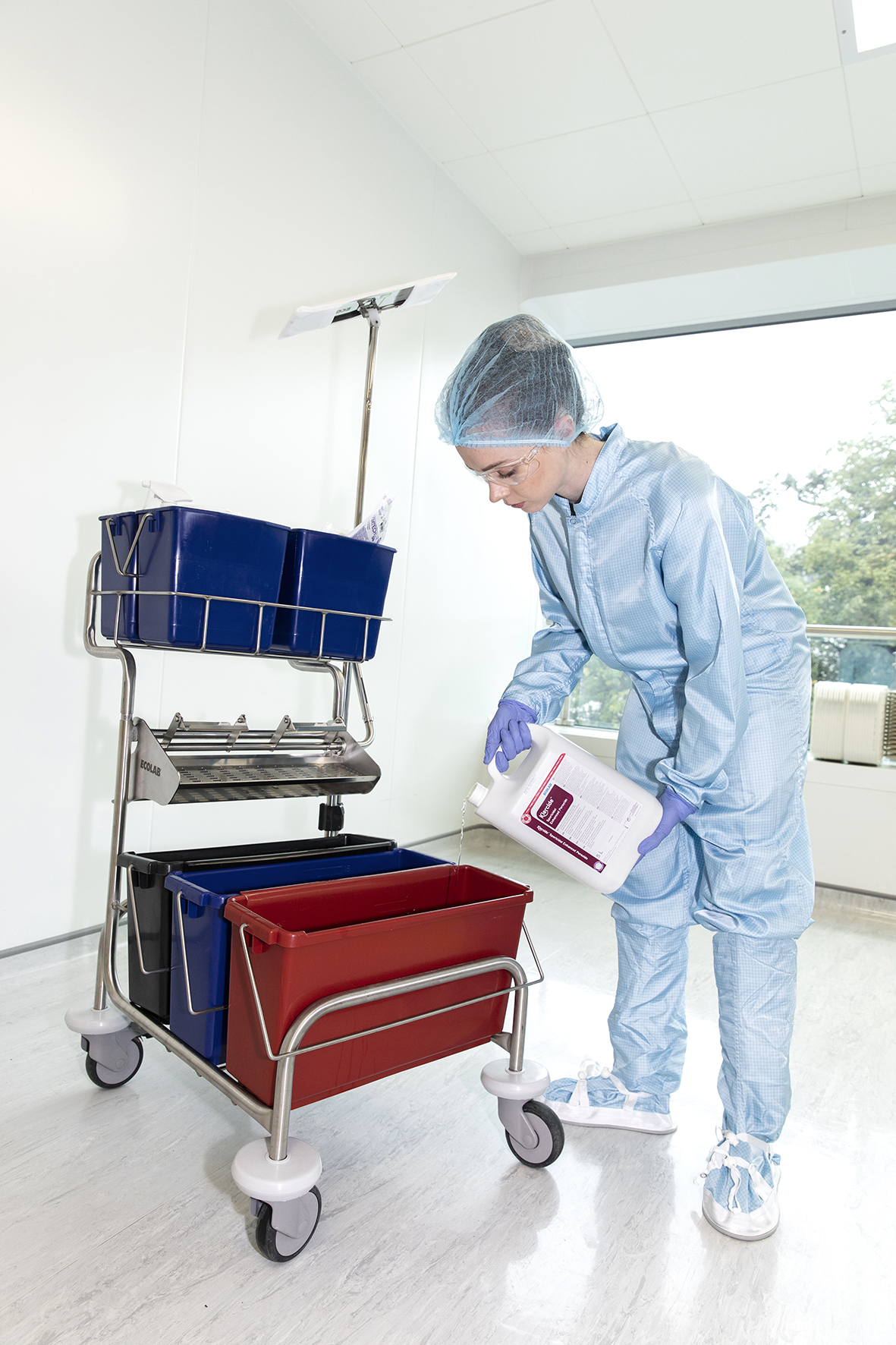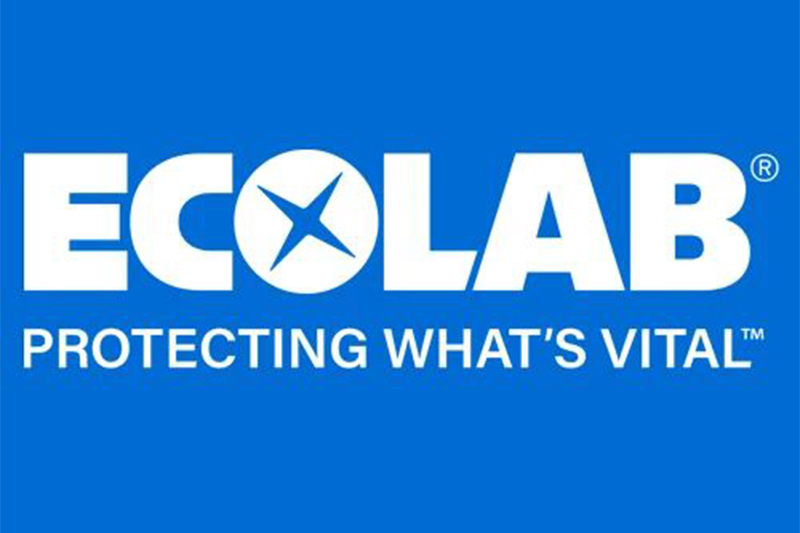Cleanroom disinfection remains a critical aspect of contamination control, as highlighted in current Good Manufacturing Practices (cGMP) and the recent revision (2022) to EudraLex ‐ Volume 4 ‐ Good Manufacturing Practice (GMP) guidelines, Annex 1. As stated in the first sentence of the section on Disinfection, 4.33 “The disinfection of cleanrooms is particularly important.” Corresponding to this is the selection, preparation, application and validation of disinfectants used in the cleanroom.
While selection of disinfectants is mostly related to efficacy, a secondary yet important aspect is related to the handling and safety of chemical disinfectants. This includes storage, preparation, handling, and sterilisation (where applicable). The types of chemical disinfectants, modes of application, as well as knowledge and capability of handling chemicals by the cleaning team should all be taken into account for selecting the appropriate disinfectant application for each cleanroom.
Much has been discussed and written about efficacy, but less has been about efficiency and safety. This topic seems to be very site‐specific, and knowing the options to consider when selecting a disinfectant solution for a cleanroom and for a given cleaning team can be beneficial.

For example, depending on the cleanroom surface space and time allowed for disinfection activities, use of mops, impregnated wipes, or sprays with dry wipes are considerations for application. Additionally, choosing between either a concentrated disinfectant solution that needs to be diluted prior to sterilisation, or a ready‐to‐use solution needs to be assessed.
For Grade A/B cleanrooms any preparation (e.g. dilution of a concentrate) of a non‐sterile disinfectant solution must be followed by sterile filtration into a clean, sterile container (such as a bucket system) by the user. “Disinfectants and detergents used in grade A and grade B areas should be sterile prior to use. Disinfectants used in grade C and D may also be required to be sterile where determined in the CCS. Where the disinfectants and detergents are diluted / prepared by the sterile product manufacturer, this should be done in a manner to prevent contamination and they should be monitored for microbial contamination.”
Microbial monitoring of these preparations is recommended unless the sterile filtration procedure can be validated. Microbial monitoring includes bioburden testing using a validated method that has been shown to reduce or remove inhibition from the disinfectant. Periodic batch analysis of the final active concentration could be performed to ensure procedural consistency. Written procedures, documentation of training and of the preparation steps of each batch are expected by cGMP.
When using a ready‐to‐use sterile solution, no additional handling steps are needed, and documentation of the disinfectant analysis and sterilisation is acceptable from the supplier
When using a ready‐to‐use sterile solution, no additional handling steps are needed, and documentation of the disinfectant analysis and sterilisation is acceptable from the supplier. “If the disinfectants and detergents are supplied “ready‐made” then results from certificates of analysis or conformance can be accepted subject to successful completion of the appropriate vendor qualification.”
Storage and handling practices
Cleanroom disinfection remains a critical aspect of contamination control, as highlighted in current Good Manufacturing Practices (cGMP) and the recent revision (2022) to EudraLex ‐ Volume 4 ‐ Good Manufacturing Practice (GMP) guidelines, Annex 1. As stated in the first sentence of the section on Disinfection, 4.33 “The disinfection of cleanrooms is particularly important.” Corresponding to this is the selection, preparation, application and validation of disinfectants used in the cleanroom.
Unopened disinfectant concentrate has a shelf‐life identified by the manufacturer in documentation supplied or on the container label. When prepared by dilution, a new expiry should be set based on analytical data for the diluted material. This data can be supplied by the manufacturer with detail of the appropriate criteria for type of water quality to use, container type, container closure type but the responsibility remains with the site to ensure their in‐house expiry date is validated.
When prepared by dilution, a new expiry should be set based on analytical data for the diluted material
Appropriate personal protective equipment should be indicated by the supplier for handling during preparation and for use in cleanroom application. When performing dilution of a concentrated solution, protection from chemical exposure is very important. For example, use of single-use (disposable) tools (such as a graduated cylinder) could provide more assurance of safety than reuse of glass or plastic that has been washed and/or autoclaved multiple times.
Unopened ready‐to‐use solution has an expiry date identified by the manufacturer for a sterile product in its unopened container. A ready‐to‐use solution is opened and used, therefore no additional expiry confirmation applies.
Supplier Qualification
Part of your decision to select a disinfectant and its application method should be based on the integrity of the supplier. Since cleanroom disinfection is a critical requirement of cGMPs, then using an approved supplier of disinfectants and application tools is expected.
A quality audit of the supplier should review their quality management system, training, process controls and analytical (including microbiological) quality control. Any data supplied that supports your decisions for disinfectant usage should be evaluated for unbiased integrity and accuracy from qualified methods and laboratory. Disinfectant efficacy, shelf‐life, and sterility are key attributes of a cleanroom disinfectant that the manufacturer should support adequately.
Summary
It is useful to take into account the handling practices required for different offerings of disinfectant solutions. Risk assessment can be a useful tool when balancing the requirements of disinfecting a cleanroom space with handling- different packaging styles of disinfectant solutions. Disinfectants that are qualified for their suitability and in‐use expiry periods will be compliant with current Good Manufacturing Practices, for example what is detailed in the long‐awaited revision of Annex 1.
Solutions of concentrated disinfectants require additional activities for preparing dilutions, set‐up of application tools (such as buckets and liners), and sterilisation (e.g. by filtration, where appropriate), where this added handling may add risk and resources to ensure compliance.
Also, analytical testing for in‐use expiry dating is required. Comparing ready-to-use disinfectant products to concentrated products, safety and efficiency are beneficial outcomes from making the right choice for your team.

